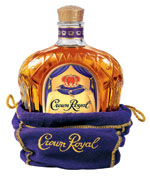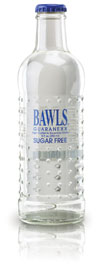
However, packaging’s tactile quality makes it ideally suited for creating not only visually engaging and distinctive product vessels, but also a uniquely stimulating sense of touch.
One of the most intimate of the five senses, touch is said to be “the first sense developed in the womb and the last sense used before death.” Another distinction is that touch is identified with “what is real.” Indeed, there are times when you can’t believe your eyes, ears, or your nose (taste may not be an option and is personal and subjective anyway) but touch is considered final proof that something really exists.
When the tactile elements of a package are intentionally designed and embraced as a point of differentiation, and if they are properly guided from a legal perspective, they can yield an important trademark right-a “touchmark”-that cements the emotional loyalties between consumers and brands.
Martin Lindstrom, a sensory branding pioneer and author of the authoritative work BRAND sense, makes a strong business case for investing in the creation of five-dimensional brands, those engaging each of the senses: sight, sound, taste, smell and touch. Lindstrom says sensory branding adds important dimensions to a brand, including increased emotional engagement that secures bonds with consumers.
In noting that “touch” is underutilized among brands, Lindstrom maintains that tactile features are powerful and says such non-traditional trademarks can enhance a company’s ability to protect its identity from the competition. While recognizing the challenge of protecting sensory elements “is by no means easy,” he contends it is worthy of pursuit.
In fact, some of the most obvious applications are those that can be represented in Braille. Consider the fact that Stevie Wonder has federally registered his stage name in the writing system of raised dots (read by touch).
Challenges for claiming a “touchmark”
In the consumer packaged goods world, though, three main legal challenges can prevent brands from trademarking tactile elements-and all three must be cleared before “touchmark” status can be granted. A touchmark must: 1) not be functional; 2) be distinctive; and, 3) be perceived as an actual trademark, not mere decoration or ornamentation.

1. A touchmark is not functional
The requirement that a touchmark be non-functional prevents a brand from acquiring trademark protection for a utilitarian product or packaging feature. If the tactile quality of a package is essential to its use or function, as in the case of an ergonomic handle on an orange juice container, it can never be protected as a touchmark.Take BAWLS Guarana energy drink, for instance. The unique raised bumps on the glass bottle are a product of great package design, but the brand takes an uninformed approach with its ad copy. Unfortunately, BAWLS undermines any hope of touchmark status for its glass bottle packaging by admitting the functional nature of the raised bumps, saying, “The ‘bumps’ on the bottle are there to provide a grip so that it does not slip out of your hand when [the bottle] is wet. And we think it looks cool.” Looking cool helps, however aiding grip does not-at least from a trademark perspective.
You would also have difficulty claiming a tactile feature as a touchmark if granting exclusivity would place others at a significant competitive disadvantage. For instance, trademarking the feel of a conventional paperboard carton would prove difficult because it would put others who commonly use the material type at a significant, unfair disadvantage.
2. A touchmark is distinctive
To protect the tactile elements of its packaging, a brand must also prove they are distinctive. They must either be instantly, inherently distinct, or they must prove they have acquired distinctiveness over time (typically after great effort and expense).Something would be considered inherently distinct if it can be said that consumers automatically and immediately associate the feature with the company or brand that put the product out. The rectangular Jarro Viejo tequila bottle, for instance, recently was granted status as an inherently distinctive trademark, with a neck and body that feature a “three-dimensional rippling” texture and a “smooth” slightly rounded closure. Miami-based Touchdown Marketing’s fragrance dispenser, which resembles a basketball with a “pebble-grain” texture and a rubberized “soft touch” feel, was considered sufficiently unique to be awarded inherently distinctive status.
A brand can also go the route of demonstrating that a tactile element has, over time, achieved distinctiveness, or a “secondary meaning,” in the minds of consumers-one that is exclusively associated with its brand. However, it’s important to point out that an inherently distinctive trademark is preferred because a brand acquires immediate protection for it upon first use, without having to worry about the feature being copied before rights can be established.
Interestingly enough, tactile features that are less than unique or remarkable can still be owned and protected, provided that they don’t serve a utilitarian function, and the brand owner has been successful in convincing consumers to rely on such design elements as behaving like trademarks. For example, a decade ago, Dooney & Bourke was able to register “a pebble grained texture” in combination with some other features, as a trademark for its leather handbags, but only after showing that these features combined to serve a trademark function. The brand waited five years before trying for such registered protection and it took an additional three years to push the application all the way through to final registration.
It’s an approach spirits brands are also taking, namely for the fabric bags commonly used to house bottles of distilled spirits. They apparently aren’t so unique as to legally be considered inherently distinctive, but there have been instances when a brand has been able to achieve trademark status for such an element by making a case for the fact that the packaging element has, over time, “acquired” distinctiveness.
Although technically not a tactile trademark, Crown Royal’s iconic purple velvet pouch has been promoted heavily in the United States for decades. In 2006, brand owner Diageo registered the visual appearance of the Crown Royal bag (replete with gold stitching and a gold drawstring) as a non-traditional visual trademark by arguing that it had “acquired” distinctiveness over time.
The danger of taking this strategy in protecting packaging, though, is that competitors may copy the tactile element before a brand can successfully make the case that “distinctiveness” has been acquired.
3. A touchmark is more than decorative
Merely decorative and ornamental tactile elements that are not so basic and necessary as to be functional can be protected as trademarks, provided they are not purely decorative, and further provided they have acquired distinctiveness. To obtain protection, the bottom line for decorative and ornamental features is they must stand out and be perceived and function as trademarks, something that can only be associated with a single brand.Kimberly-Clark, no stranger to creating and protecting non-traditional trademarks (e.g., purple-colored exam gloves and oval-shaped facial tissue dispensers), is currently working on registering a new sensory touch mark for disposable paper hand towels. In January, the company filed a trademark application for a touchmark that it describes as a “distinctive arrangement of [a] textured alternating dot pattern appearing on the surface of the carton of disposable paper handtowels.”
Though the application was initially denied this spring, Kimberly-Clark could still pursue registration by digging a little deeper and demonstrating that the textured dot pattern would stand out and perform as a trademark-something that’s identified with the brand-and not as mere ornamentation.
An example of a brand successfully making that case is Backwoods, maker of all-natural cigars. To highlight its Wild West associations, the brand’s packaging takes on a rustic flair with a “simulated burlap design” that creates the illusion of a “woven texture” on the flexible pouch housing the cigars. The brand met the “acquired distinctiveness” test and achieved trademark status for this packaging by overcoming any concern that the burlap design was mere ornamentation.
Given that tactile branding is still in its infancy, an interesting question might be raised if Backwoods were to challenge a competitor’s use of actual burlap on cigar packaging.
Those who market distilled spirits and wines also have demonstrated strong interest in tactile branding and touch marks. In 2006, after going back and forth with the U.S. Trademark Office a couple of times, American Wholesale Wine & Spirits finally obtained federal trademark status for a velvet textured covering on the surface of a wine bottle. The company successfully persuaded the U.S. Trademark Office that the tight and turgid “velvety surface” of the wine bottle was unlike the limp and “loose fitting” velvet feel of fabric bags used by other spirits brands, including Crown Royal.
In response to the Trademark Office’s initial caution that the velvet textured covering could be considered functional (and therefore, not a candidate for trademark protection), American Wholesale explained that there was no function for the velvet covering of its wine bottles “other than to distinguish them from all other wine bottles, which lack a similar feel, and to indicate that source of the wine.”
Had the Trademark Office been better informed, there likely would have been some discussion about possible functionality and the relationship between the “velvety” feel of the bottle surface and the “velvety” characteristic of the wine.
Indeed, early adopters of tactile branding may enjoy broader rights than later adopters-at least for now. Consider how American Wholesale’s “velvet touch” registration surprisingly prevented another company’s registration of a leather-like textured covering for its wine. The Trademark Office denied the request for a leather-like textured touchmark by Interbalt Products Corporation, a wine, beer and spirits importer, saying that, while the coverings were different materials, “both are highly textured and closely cover the glass wine container. The marks are therefore highly similar in appearance…Purchasers could mistakenly believe that the goods come from a common source.”
It’s clear that the path to securing touchmark status for packaging is a difficult one. But the benefits of incorporating sensory branding elements into product packaging (and seeing a return on these significant investments) cannot be fully realized without being able to own them and, as a result, prevent competitors from copying them.
Yet, the U.S. Trademark Office and the courts are often skeptical of non-traditional trademarks like touchmarks. Because they are scrutinized carefully, relatively new with little precedent, and because there are many opportunities for making “fatal” legal mistakes, the clearest path to success is very early collaboration between a brand’s design, marketing and legal teams. Consider these first steps to guide the process:
1. Investigate the competitive landscape and set out to create tactile features that are not common, but, rather, unusual and unexpected within the product sector;
2. Avoid any attempt to claim a functional packaging feature as a touchmark;
3. Avoid minor refinements of commonly adopted and well-known ornamental packaging elements;
4. Conduct your due diligence to avoid conflicts with preexisting legal rights;
5. File intent-to-use trademark applications as soon as the tactile feature gets the green light during the package development phase;
6. Undertake legal review of marketing materials to avoid undermining or eliminating protection (as BAWLS Guarana apparently failed to do by admitting the functionality of its otherwise unique “bumps” in ad copy); and
7. Perhaps most importantly, develop the equivalent of “look-for” advertising where brand communications point out the touchmark to help consumers view the tactile feature as an actual trademark (e.g., “Reach for the velvet wine label” or “Look for the purple Crown Royal velvet bag”). BP
Stephen R. Baird is founder and lead author of DuetsBlog.com, and chair of the Trademark & Brand Management Group at Winthrop & Weinstine, P.A. Having focused on trademarks and the legal implications of branding, packaging and design for nearly two decades, Steve is a frequent speaker and award-winning author. Contact Stephen at sbaird@winthrop.com or 612.604.6585.

